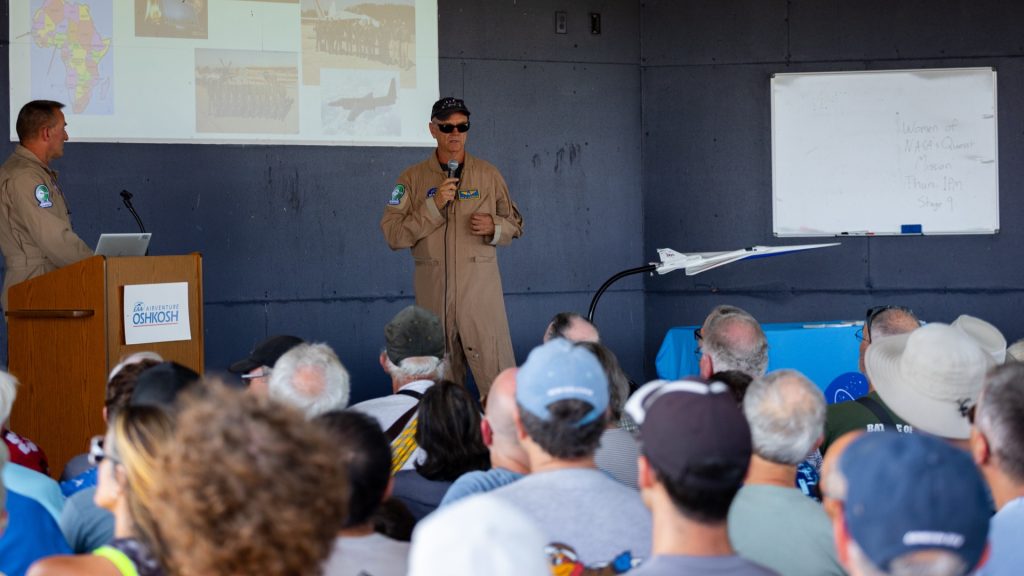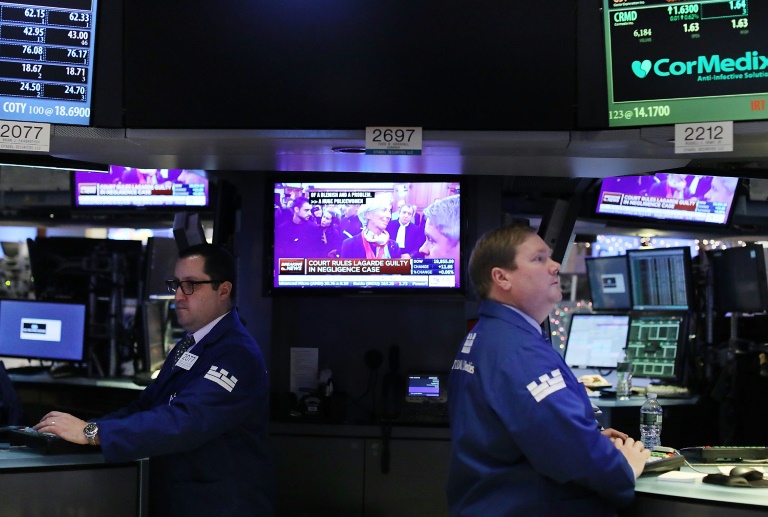The X-59 has been under development for years now. While its first flight is hopefully coming later this year, what do all the program’s test pilots do when there’s no plane to fly? The X-59’s lead test pilot Nils Larson and his partner Jim Less gave a good explanation with what has kept them busy.
The X-59 has three test pilots, two from NASA and one from Lockheed Martin (the aircraft’s builder). While their primary job is to hop in a cockpit and fly the plane, if there is no plane, what do they do? With supersonic flight being a crowd favorite of general aviation enthusiasts, NASA brought their pilots down to EAA’s AirVenture in Oshkosh, Wisconsin to discuss the path to flight.
Simulator testing, “see if this kills you”
The X-59 is a mosh pit of hardware from a variety of planes. The cockpit is from the T-38, landing legs and fuel system from the F-16, and the engine taken from a F/A-18 Super Hornet. Along with all of this, much of the body is custom and is a design never flown before.
While they can’t fly the actual plane, they can fly something very similar to it, a simulator. Thanks to its entirely fly by wire system (meaning everything is computer controlled and the pilot just gives input through their controls) and help from engineers and researchers, NASA test pilots Nils Larson and Jim Less can hop inside a virtual copy of what they think the X-59 will fly.
Using computational fluid dynamics, wind tunnel testing, and various other tools, engineers can give Larson, Less, and Dan Canin (Lockheed Martin‘s test pilot) an aero model. This model is what they believe the aircraft will fly like. With that data, the flight control team can build them an exact copy of the aircraft’s cockpit for the team to test out.
Over the last few years, the pilots and engineers look into as much as they can on the ground before they fly in the air, catching anything that could possibly go wrong. “What they will do is we have all these really smart people that’ll go out there and they run these computer models where they’ll vary all those different inputs to that model and they’ll figure out which are the worst combos. Then they give it to [Less], I, and [Canin] and they’re like, see if this kills you.” Larson said at a forum at AirVenture.

Along with also developing the testing plan for the X-59 once it’s finally in the air, the pilots also work on the tools that will be used during flight tests.
NASA plans to use a modified F-15 fighter jet with an extended boom on the nose to take measurements when flying at 55,000 feet. The teams also designed a way to use Schlieren photography on the X-59 while in flight to study its shock diamonds while supersonic. Usually this type of photography is only capable with small models in a wind tunnel, but NASA found a way to make it work in the real world.
Another aircraft NASA is using to study the X-59 in flight is a motor glider. The idea behind this is the ability to fly below the X-59 while it passes, shut off its engine to become silent, and record any sound it hears.
The final bit of gear Less described they built was a series of ground instruments that will record the sound across the X-59’s flight path. These are the most important part of the X-59 program as its mission is to reduce the noice impact sonic booms have when passing over head of populated areas. If these don’t register low enough levels, then supersonic flight might remained banned over land.
Larson, Less, and Canin are hoping to start flights of the X-59 later this year or early 2025. There’s still a lot to do before that happens but they’re doing everything in their power to make it all worth it.
FTC: We use income earning auto affiliate links. More.







